After 4 months, a job change, and college graduation for daughter #1, I was able to free up a Saturday (31 May) to host Op Session #2 for the model S&NY.
I approached #2 with a great deal more trepidation than #1, paradoxically because #1 was deemed a major success by the participants. So, the bar had been set, and standards must be now be upheld!
Crap.
Adding to the mystery, only 4 of the original 6 crewmembers were going to be able to make it. This turned out to be a good thing, as I was curious how a smaller crew would work out. (Pretty well, in fact.)
Despite the intervening 4 months, I was only able to make a few changes/improvements to the railroad: I got about 20 more cars weathered and on the layout, and I replaced 10 of the original CV turnout frogs with metal frogs from Proto:87 Stores. I also developed a tentative timetable schedule of trains.
The extra cars made a big difference, as there were now sufficient through cars to allow the “Fast Freight” (as the real S&NY called it) to make a third trip if necessary. Also, there were now enough through PRR hoppers from Marsh Hill to Towanda to necessitate the coal extra to do more sorting of cars in Marsh Hill yard. In addition, I changed the train instructions so that all the local switching at Newberry is done by the Fast Freight crew, rather than the Mixed train crew. This balanced the workload a bit more, and I think made all three jobs a bit more interesting and time-consuming in a good way. My goal is to have the crews busy enough to keep interest and focus up, but not too much to feel harried. After all, the S&NY was a struggling Depression-era shortline, not the PRR mainline.
The timetable was developed with input from the crews during Op Session #1; I had the fellows try to keep note of the times when they arrived and departed each station and how long the work took. Here is the trial version for Op Session #2:
The timetable worked well for the first third of the session, but after that departed from reality too far to be of much use. After the first trains got to their destinations, the station work took FAR longer than I had allowed in the timetable, and the schedule fell apart. Adjustments will be made for the next session.
Since we did now have a timetable of sorts, I was able to act as “roving dispatcher” for a while, and wrote the very first orders for the railroad:
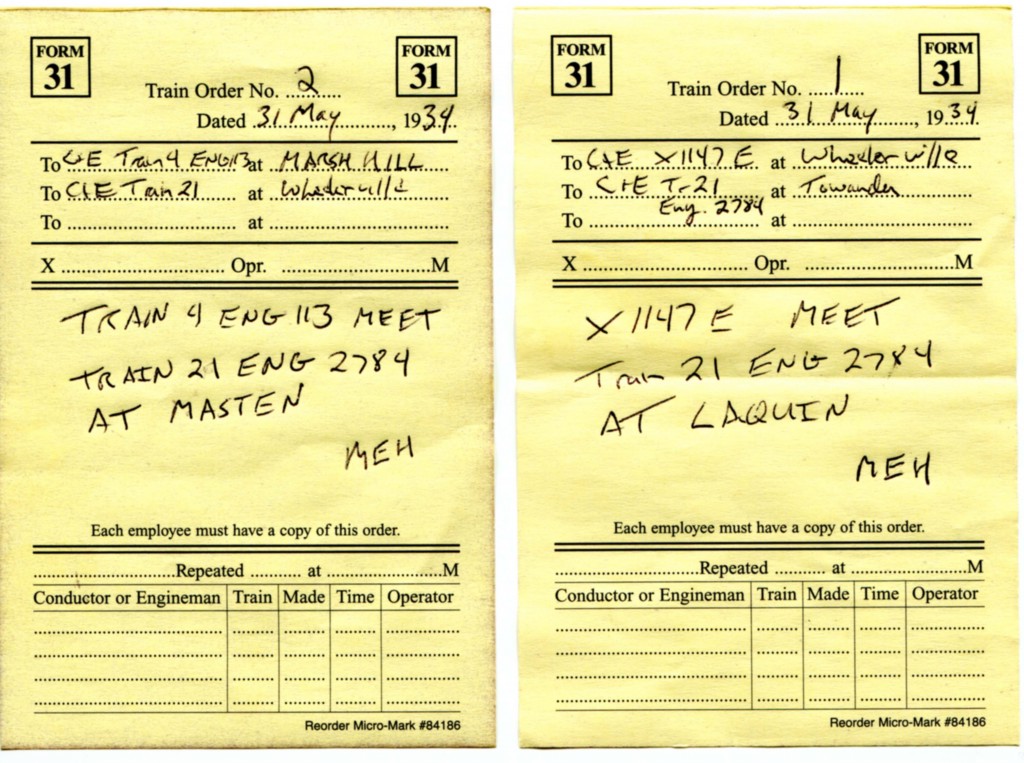 I have been studying this book, which is essential for learning timetable and train order operations for a model railroad:
I have been studying this book, which is essential for learning timetable and train order operations for a model railroad:
I still have a lot to learn, as the “form” on the model orders is not quite correct. When referring to trains by number, the order should read, “NO 4 ENG 113 MEET NO 21 ENG 2784 AT MASTEN” We didn’t write any clearances in the interest of time, but I think eventually we will include those to add authenticity. The model forms are available from Micro Mark, and are really a bit too small, but will work ok for now.
Here is a real order and clearance card from the S&NY from 72 years ago:
There were still a few electrical glitches – the Bachmann 2-8-0’s had intermittent pick-up troubles, hopefully a wheel cleaning will fix that. I had remotored and painted a PFM Ma&Pa engine, which shorted intermittently between the cab and tender deck in tight curves. I have a fix planned for that problem which should not be difficult. The original CV turnout frogs continue to short intermittently at the closure rails, and I now plan to replace ALL the frogs with metal frogs from Proto:87. This will take a bit of time, but will eliminate that problem all together.
Despite that, I think Session #2 was a success, and I think the crews will agree. Interestingly, some of the fellows prefer one-man crews, and a couple think 2-man crews is the way to go. I think though for the time-being anyway, I will not INCREASE the number of people invited to a session.
Lastly a couple of photos from the session:
Fred L. works the NYC/RDG interchange at Newberry with Train 21.
Eastbound Mixed Train 4 works upgrade around the Masten Loop, crossing over Pleasant Stream.
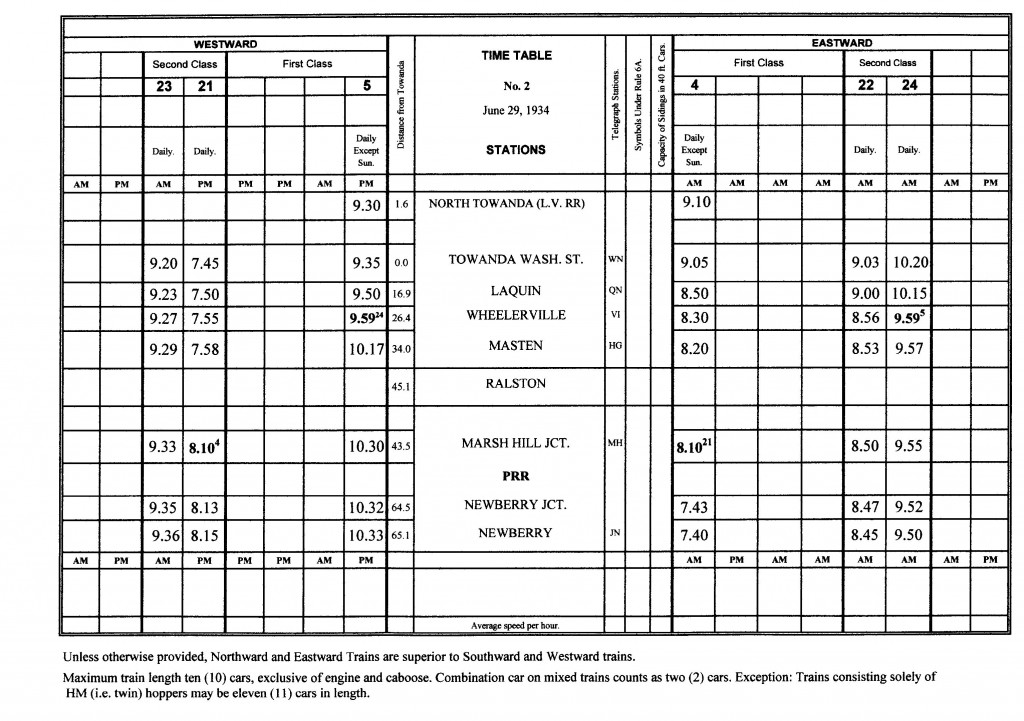
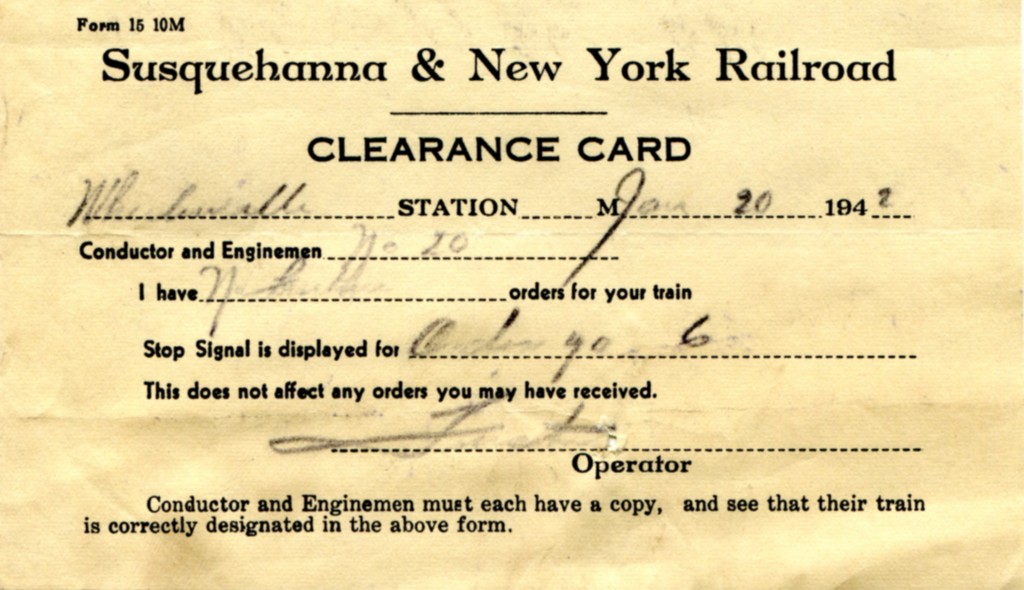
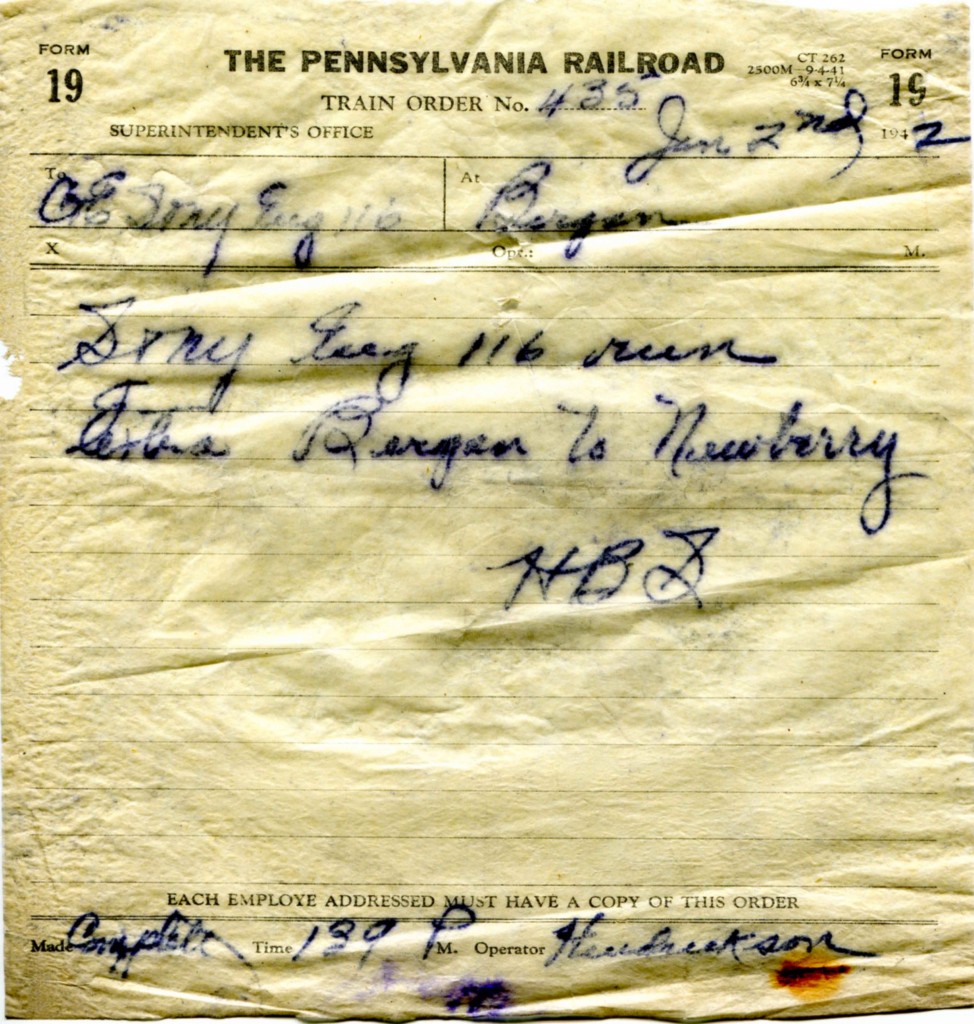

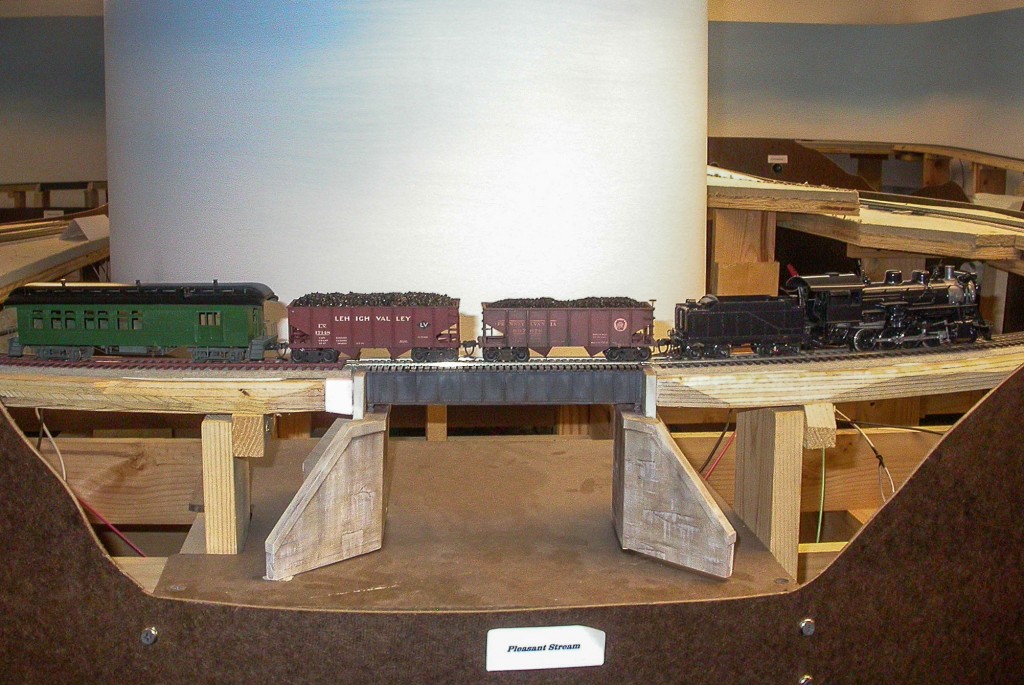
Recent Comments